Hiking to Petra, Jordan’s greatest UNESCO archaeological site
by Jennifer Bain
I love the road less travelled, especially when there are crowds to avoid, camels to photograph, desert-dwelling Bedouins to see in the distance and random cats to pat before you get an astounding first glimpse of one of the world’s most famous archaeological sites. Petra is Jordan’s crown jewel, but for a quieter experience, I recommend taking the “back-door hike” to it.
Most people who visit Jordan’s crown jewel enter through the “front door,” setting off en masse from the visitor centre, hitting a few highlights and then retracing their steps on a manageable loop. Going through the “back door” means taking a much longer but one-way route from Little Petra (north of Petra) and enjoying precious quiet time in the desert before braving the crowds at the Monastery, Treasury and visitor centre. On the back door hike, men with donkeys will try to cajole you into hitching a ride for the long, hot journey. Don’t be tempted. Half of the fun of getting to this archaeological oasis — one of the New 7 Wonders of the World and perhaps best known from Indiana Jones and the Last Crusade — is passing through the desert on your own two feet.
On the “mild” autumn day that this cold-loving Canadian hiked, temperatures sailed to 34C (93F) and it was sweat-hydrate-rest-repeat for nearly seven hours. The going is slow as my group trudges across the windy desert and then gets a cardio workout climbing up and down steep canyons. But I treasured every challenging step.
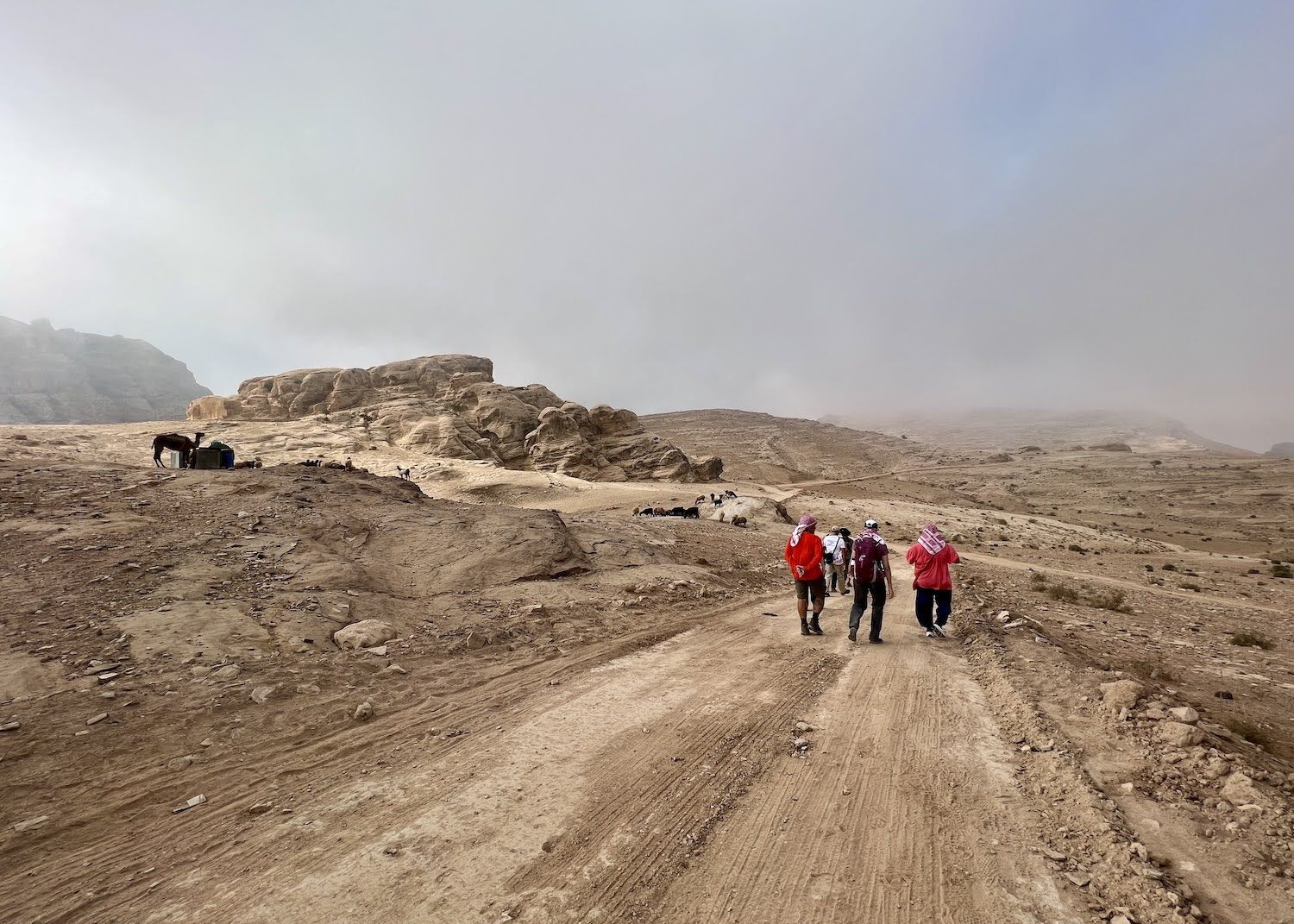
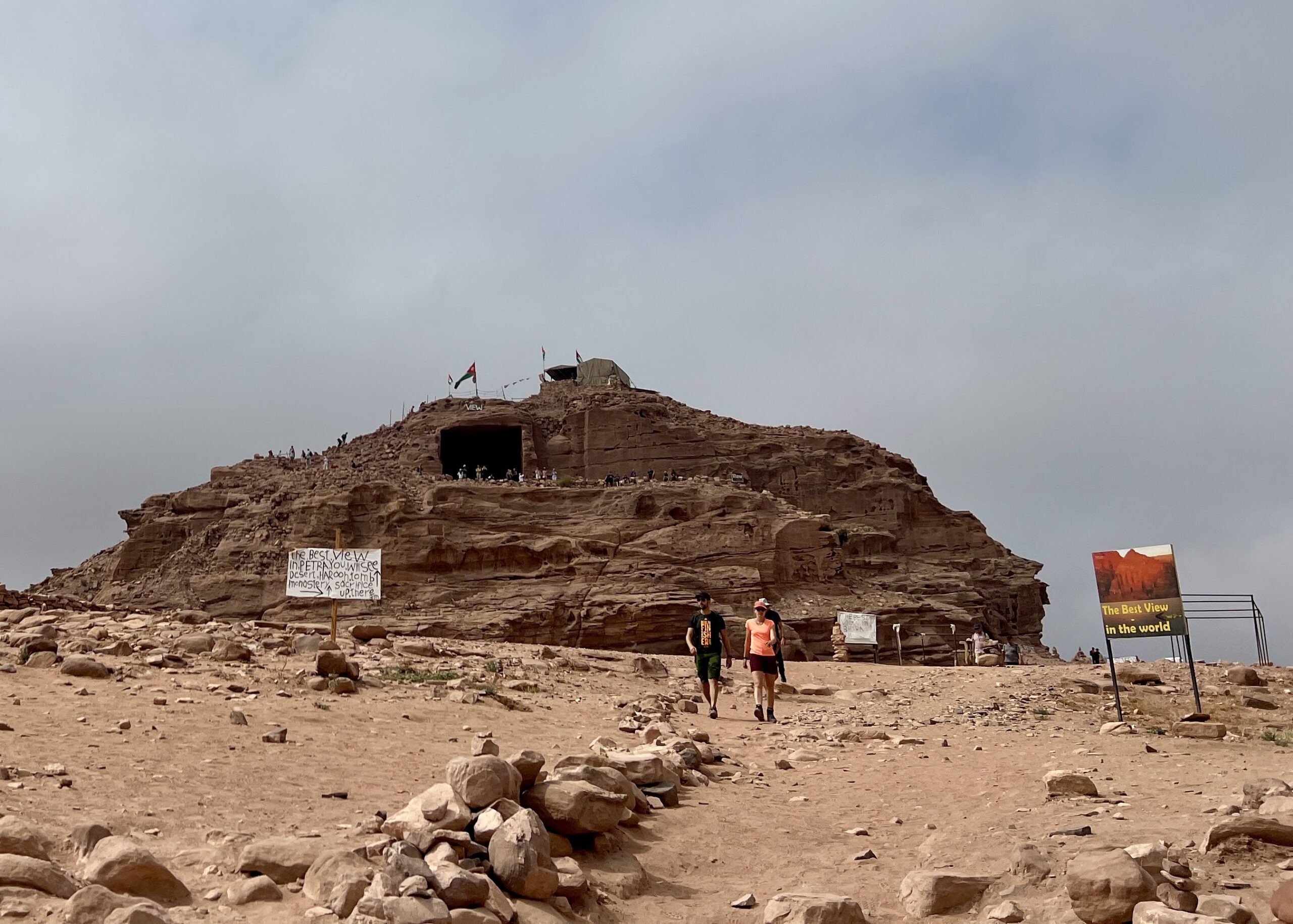
Petra, the “Rose-Red” city of the Nabateans
The ancient city of Petra is the legacy of the Nabataeans, an industrious Arab people who settled in southern Jordan more than 2,000 years ago. Carved and built into the sandstone mountains and once home to the Nabateans, Edomites and Romans, Petra was a resting stop for trade caravans laden with frankincense, myrrh and spices. “It was admired for its refined culture, massive architecture and ingenious complex of dams and water channels,” according to Visit Jordan.
Devastating earthquakes, plus changes in trade routes, led to Petra’s demise. The “Rose-Red City” was abandoned by the 7th century and forgotten by everyone except local Bedouins. Petra was rediscovered by Westerners in 1812 when Swiss explorer Johann Ludwig Burckhardt dressed as an Arab and convinced a Bedouin guide to take him to the rumoured Lost City.
Three things catapulted Petra onto the world tourism stage. In 1985, it became a UNESCO World Heritage Site for being “one of the most precious cultural properties of man’s cultural heritage.” In 1989, it starred in the final moments of Indiana Jones and the Last Crusade. And in 2007, it made the cut for the New 7 Wonders of the World list. Now Petra — between the capital of Amman and the Red Sea town of Aqaba — draws around a million visitors each year.
To be clear, one day isn’t remotely enough time to explore this massive complex of tombs and temples that Jordanians like to say is the size of 50,000 football fields. But one day was all I had during a five-night blitz across the country with Magic Travels for an Adventure Travel Trade Association conference.
Landing on Oct. 7, 2023, my first visit to the Middle East coincided with the start of the Israel-Hamas war, but as my family urged me to come home, my guides showed me how this welcoming Arab nation is an oasis of calm in a turbulent region. I rarely spent time alone but felt perfectly at ease on a solo pilgrimage to Hashem Restaurant in Amman for its legendary falafel and hummus.
Read More: What to Know Before Visiting Jordan
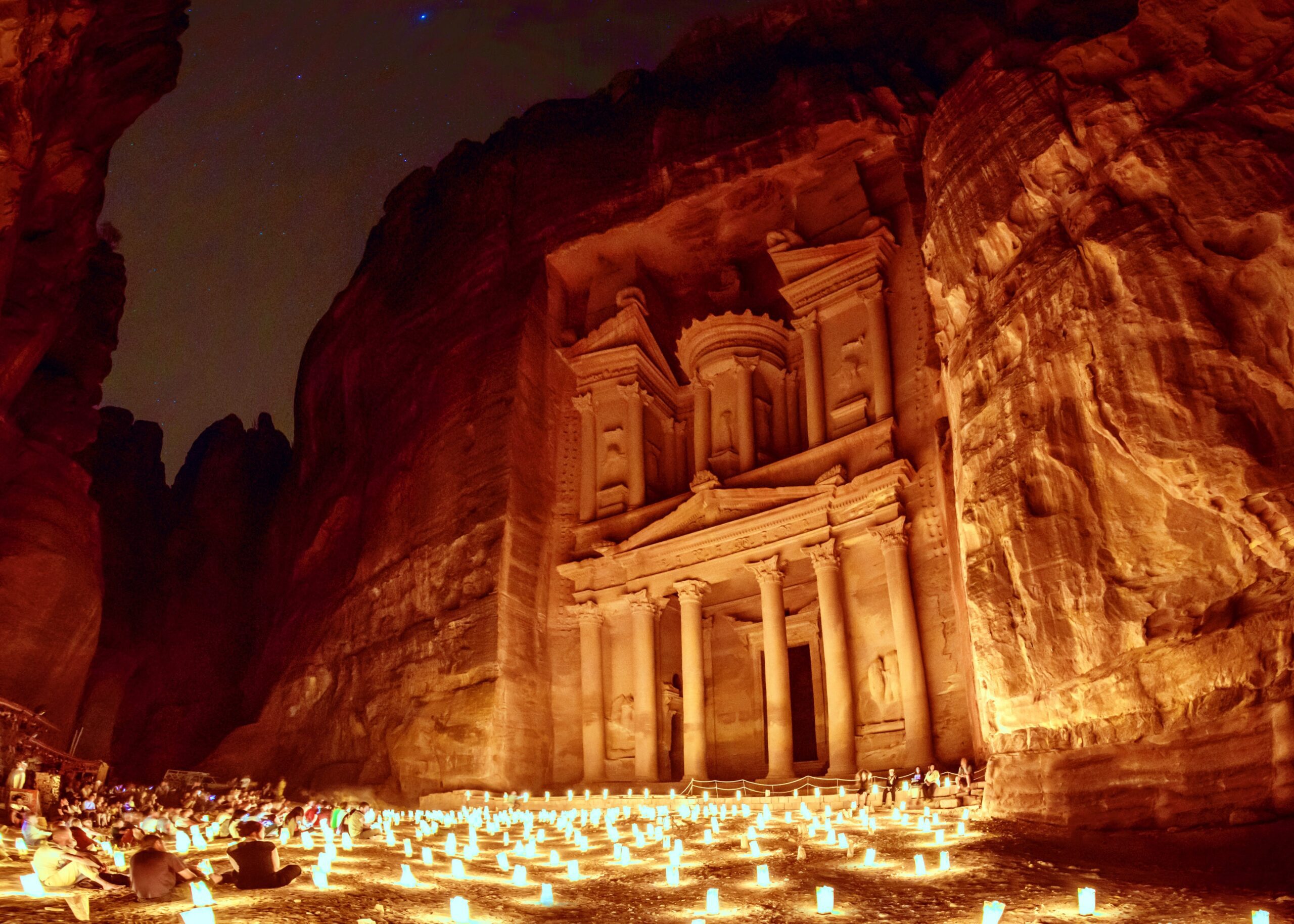
Experiences on the hike to Petra
The cookbook author/food writer in me pines for the sage tea that Royal Society for the Conservation of Nature (RSCN) guide Rafat Mohamad Ali Quduh makes during an Ajloun Forest Reserve hike. I recall charring eggplants for a creamy dip called mutabal at Beit Sitti, a wonderful women-run cook-and-dine business in Amman. I remember drinking my first fresh pomegranate juice at Beit Khairat Souf, a women-owned social enterprise that creates a platform for local women to financially support themselves through its restaurant and food shop in Souf.
I feel connected to history standing on Mount Nebo, where Moses viewed the Promised Land before his death. In Madaba, the “Mosaic City,” I’m terrible at art, but gamely made a rudimentary tile with the letter J at the Madaba Institute for Mosaic Art & Restoration with help from female artists. In the Wadi Rum Protected Area — popularized in the 1972 film Lawrence of Arabia — I spend a memorable night at Saraya Rum Private Luxury Camp.
On the Rummana Mountain Trail in Dana Biosphere Reserve, I sit on the ground and take in the beauty of the canyons and sandstone cliffs. “Maybe the big problem in our lives is that we need to be just a little calm and silent,” guide Taleb Alsouid philosophizes. I’m always on the go and will always be grateful that he forced us to sit down in silence for several minutes.
There is stargazing and a sunrise hike at Feynan Ecolodge, a 26-room off-grid lodge in the Dana Biosphere Reserve that generates most of its energy needs from the sun and is lit by candles and the stars at night. Owned by the RSCN and operated by EcoHotels, the ecolodge supports Bedouin communities by hiring them as staff and drivers, and enlisting them to lead experiences like weaving goat-haired tents and making Arabic coffee. I dream of returning to spend a day with a shepherd and grazing goats.
Yet despite all these incredible experiences, nothing could beat that unbearably hot, hard on the knees and at times vertigo-inducing desert hike to see ancient monuments carved out of rock. I was 55 at the time and in decent shape, but am surprised by how much the heat slowed me down. A life-long workaholic who thrives on stress, I’m used to pushing myself mentally but realized I really should be pushing myself physically instead.
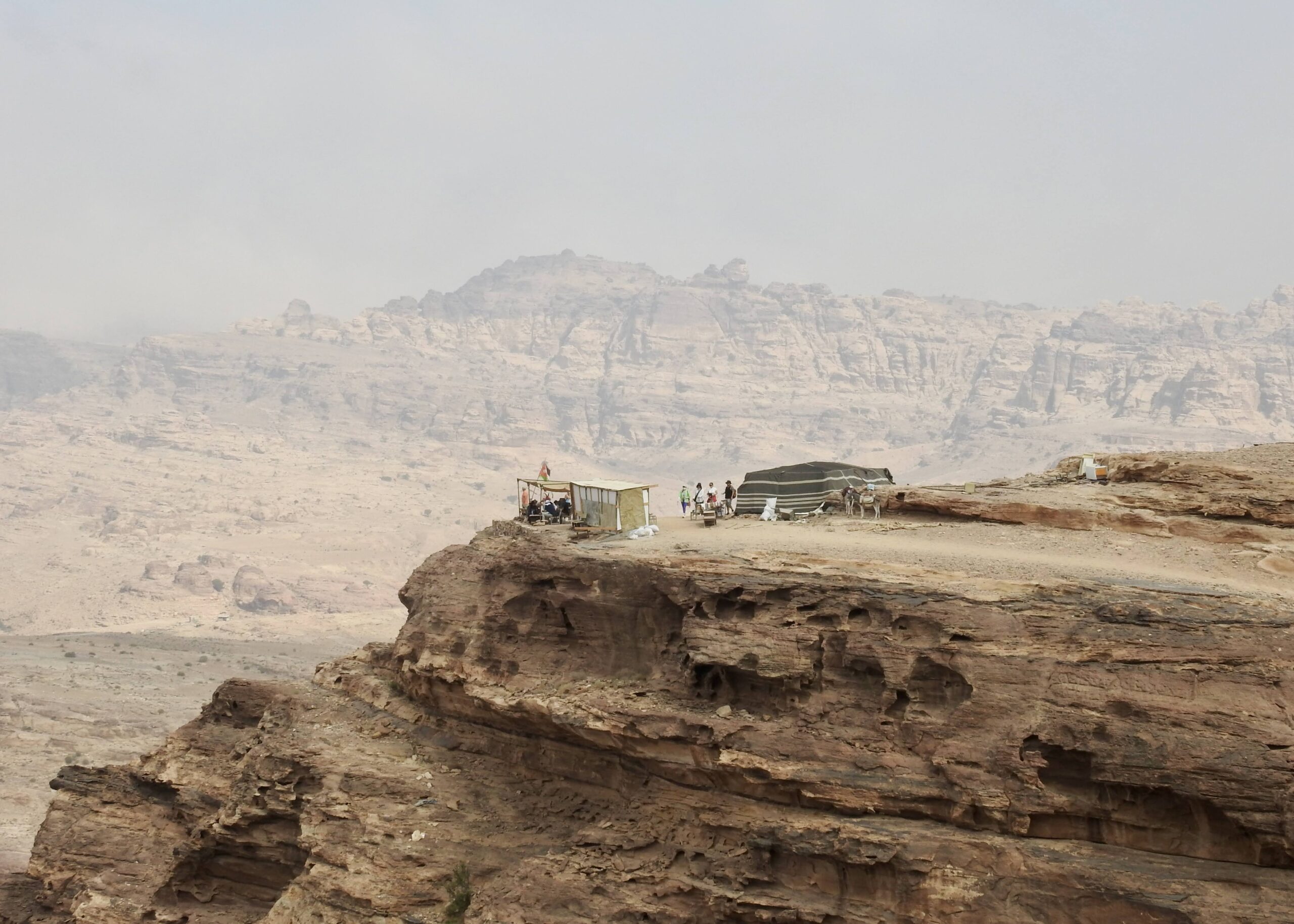
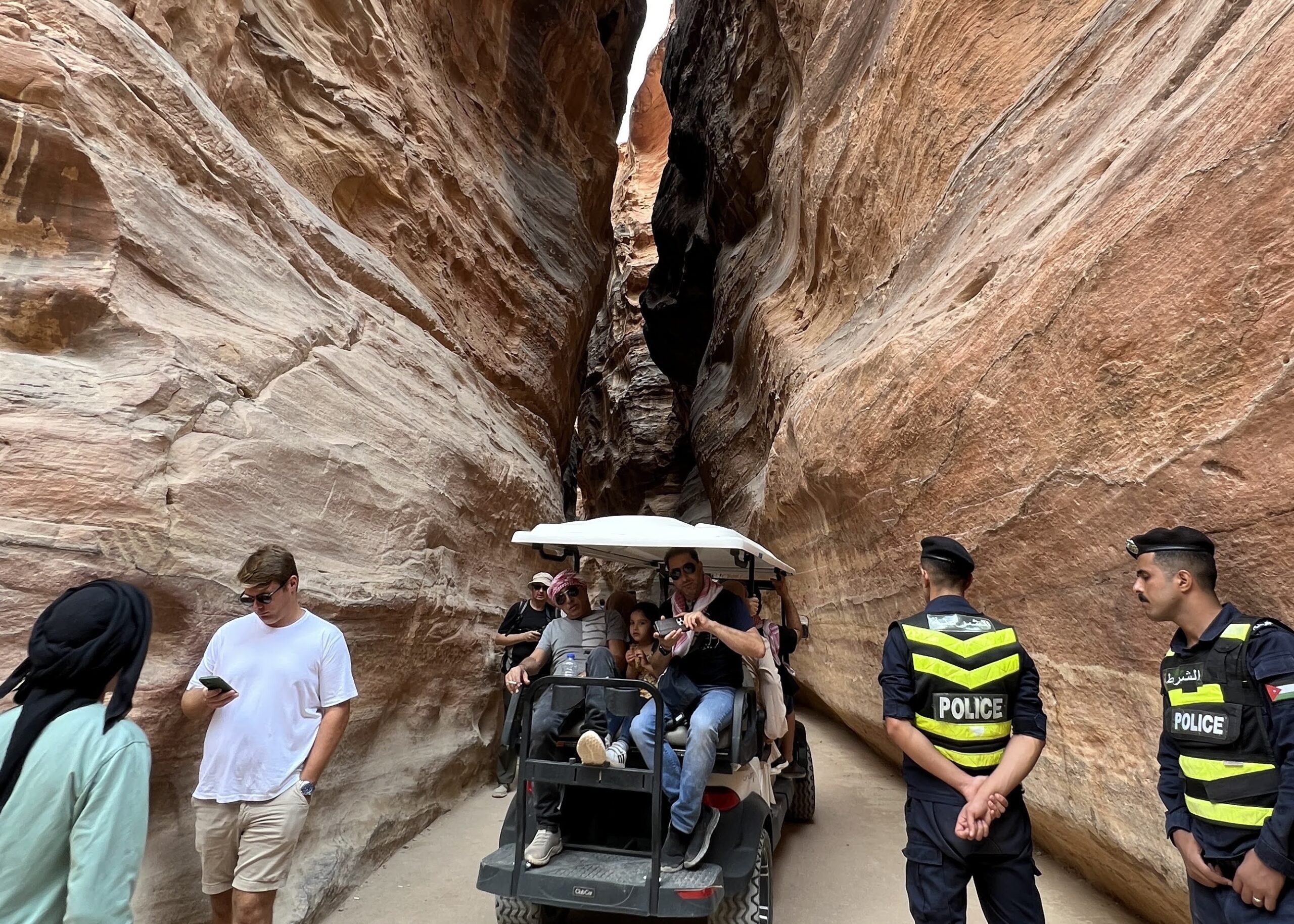
A hike through the Siq gorge
Even the easiest, and most common, route to Petra takes about two hours. The masses leave from the visitor centre on the main trail and rub elbows in the Siq, a long narrow gorge (1.2 kilometres or 0.7 miles) that opens to the towering façade of Indiana Jones fame called the Treasury. Many take selfies and turn back, retracing their steps and missing out on countless other monuments including the astounding Monastery.
My much longer back-door hike allowed me to start slow, ease into the crowds and walk in just one direction.
Setting out from Little Petra (a small archaeological site north of Petra), I paced myself, acclimatizing to the dry heat and gaping at camels, whose front legs were tied together so they couldn’t wander too far. A couple of women in our group fell behind, and a few of us discreetly dawdled so they wouldn’t be alone. Ninety minutes into the day, canyons appeared and so did the persistent men with donkeys.
A provocative handwritten sign offered caffeine to prepare for what was coming. “Every morning I long to hold you. I need you. I want you. I have to have you,” it said. “Your warmth. Your smell. Your taste. Ohh coffee, I love you.” I was tempted, but I’m one of those weird people who is naturally caffeinated.
Water — not caffeine or donkeys — got me through the endless ups and downs that followed until we rounded one final mountain bend and gaped at the Monastery, a nearly 50-metre (164-foot) tall façade deeply carved into the cliff face that was reused as a Christian chapel.
That salty-sweet sustenance gave me the strength to tackle the crowded part of Petra, dodging shopkeepers hawking headscarves and even enjoying the jam-packed Treasury with its Corinthian capitals topped by a frieze of winged griffins and the goddess Isis surrounded by dancing female warriors.
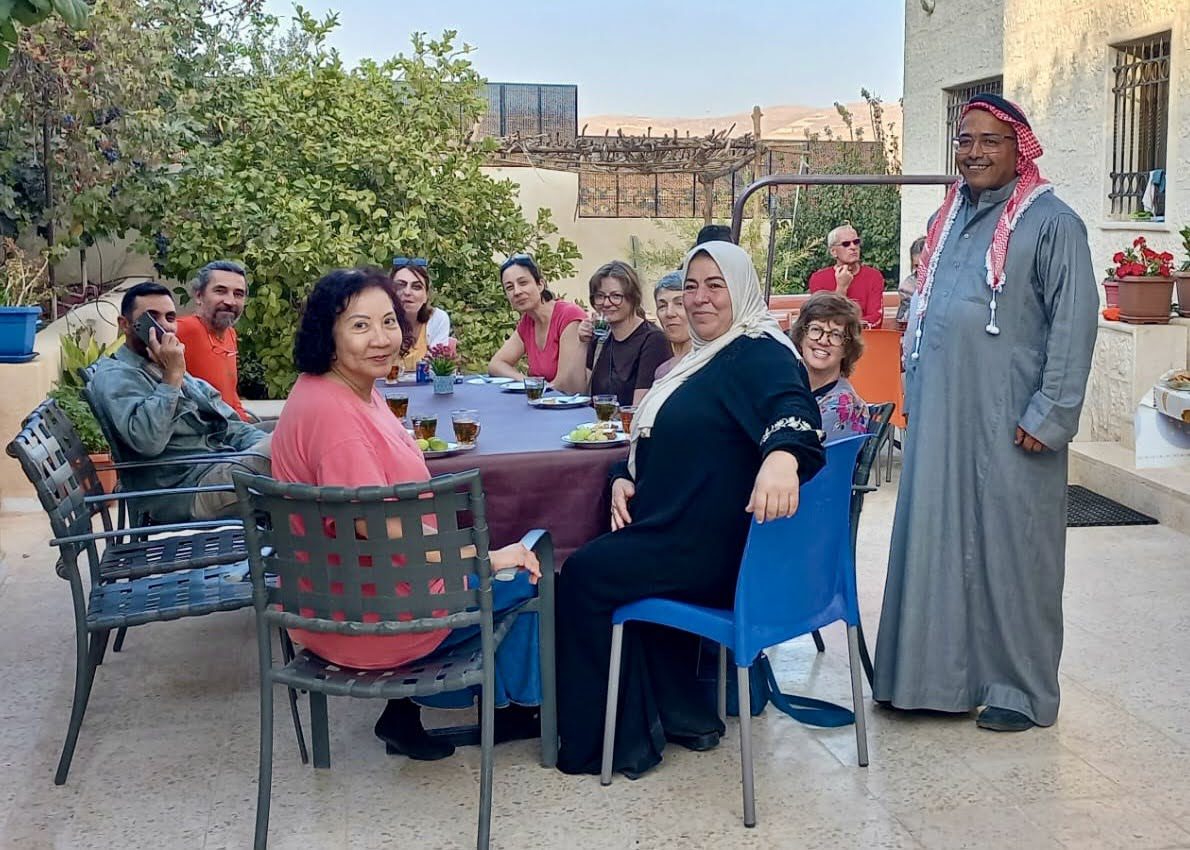

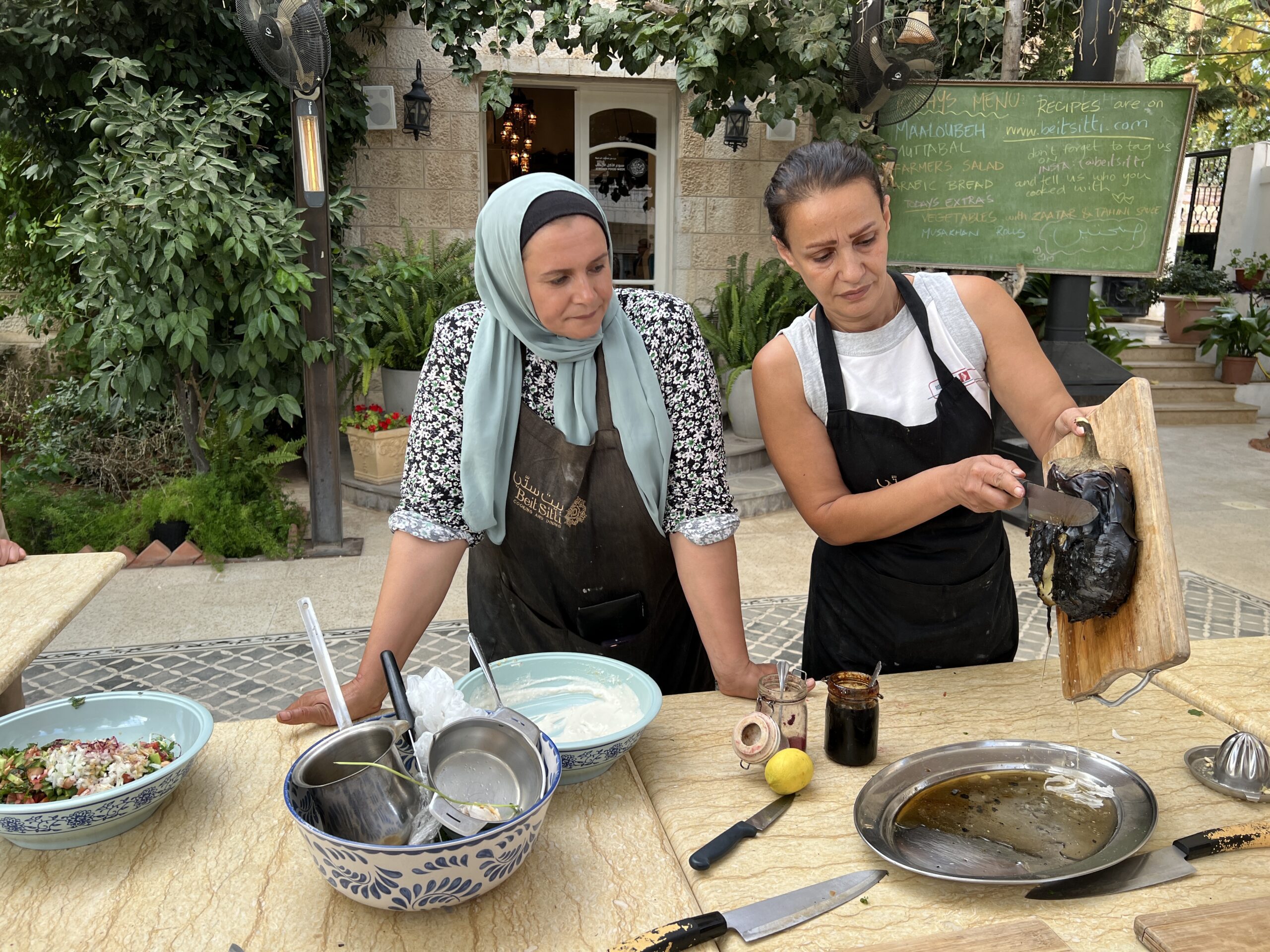
A journey marked by smiles
On the home stretch, I meander through the spectacular Siq, past the visitor centre and to the parking lot to rendezvous with our driver. But that busy day is far from over — we head to Wadi Musa for an “Eat With A Local Family” experience arranged through A Piece of Jordan.
Amneh and Shuayb Twaissi welcome us into their home with tiny cups of Bedouin coffee laced with cardamom, saffron, cloves and ginger, and I can’t resist having a few sips. We share a feast starring Jordan’s national dish mansaf (goat with fermented dried yogurt sauce and rice) before heading to the patio for dessert.
As we swap stories with our gracious hosts over mint tea, I can’t help but recall one more sign from the back-door trail, the one that suggested “It’s not how many miles you walk, it’s how many smiles you share.” I walked 24,143 steps that day in Petra, and surely smiled at least that many times.
Disclaimer: To learn about this country, Jennifer was a guest of Visit Jordan and the Adventure Travel Trade Association. Neither reviewed this story before publication.
Planning your trip to Petra, Jordan
How to get there
Fly to Amman’s Queen Alia International Airport (AMM) or Aqaba’s King Hussein International Airport (AQJ), and then travel by car, taxi, or bus to the nearby town of Wadi Musa. Click here to check for flights on Skyscanner.
Where to stay
Just outside the main entrance is the Movenpick Hotel. Jennifer stayed at the Hayat Zaman Hotel & Resort. You can also stay at smaller accommodations or in nearby Wadi Musa. Click here to find the perfect place to stay.
More to Discover From The Middle East
G Adventures Expands Itineraries for Older Women on 2025 Classic, Dr. Jane Goodall Collection and Geluxe Trips
G Adventures is expanding its range of adventure trips for older women, focusing on affordability, longer stays and unique accommodations.
Will Travel for Food: Food Tours for Solo Women
Not only do food tours give insight into a culture, they are a great way for solo women to connect with locals and other travellers.
Navigating Doha and Qatar Airways: A Wheelchair User’s Accessible Travel Adventure
Is Doha accessible to wheelchair users? Tanzila Khan finds that a 15-hour stopover becomes a memorable adventure, leaving behind a trail of empowerment and advocacy.

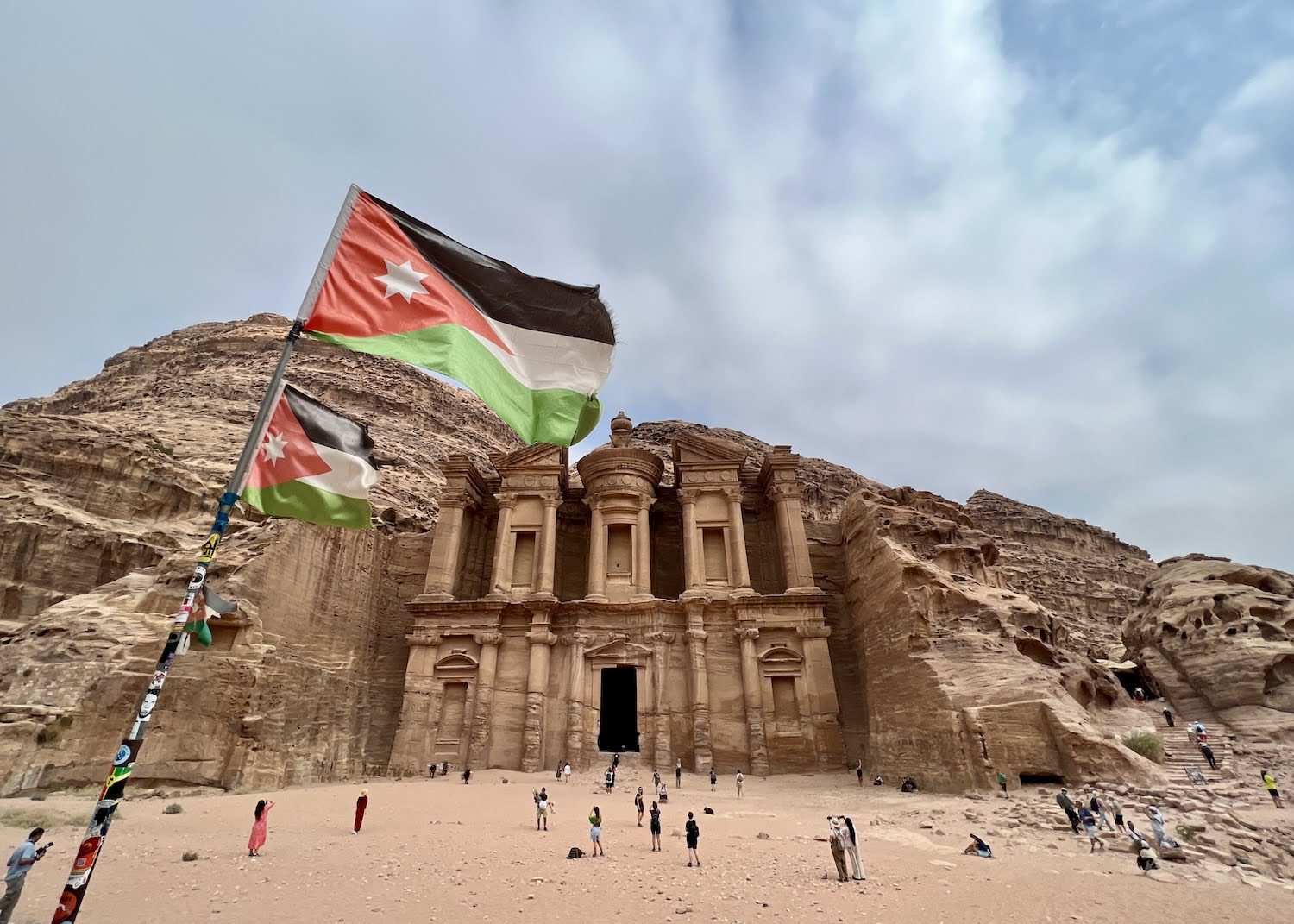


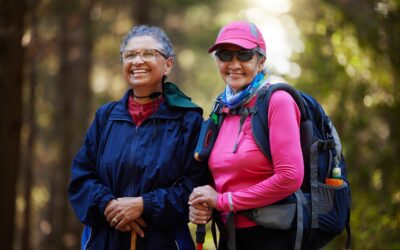

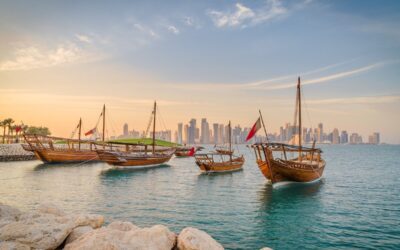
0 Comments
We always strive to use real photos from our own adventures, provided by the guest writer or from our personal travels. However, in some cases, due to photo quality, we must use stock photography. If you have any questions about the photography please let us know.
Disclaimer: We are so happy that you are checking out this page right now! We only recommend things that are suggested by our community, or through our own experience, that we believe will be helpful and practical for you. Some of our pages contain links, which means we’re part of an affiliate program for the product being mentioned. Should you decide to purchase a product using a link from on our site, JourneyWoman may earn a small commission from the retailer, which helps us maintain our beautiful website. JourneyWoman is an Amazon Associate and earns from qualifying purchases. Thank you!
We want to hear what you think about this article, and we welcome any updates or changes to improve it. You can comment below, or send an email to us at [email protected].